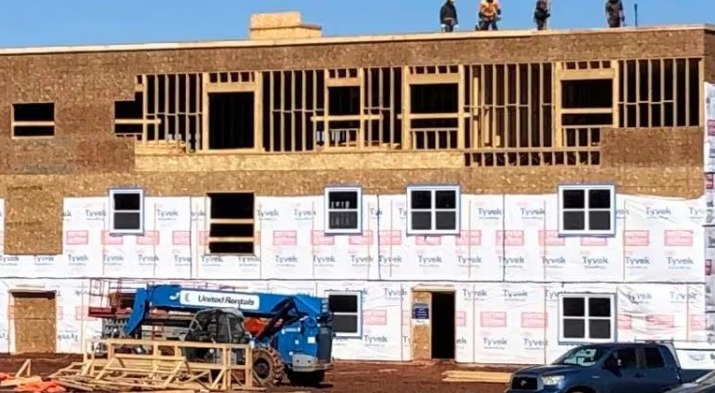Canada’s Immigration Cuts Could Halve Housing Gap by 2030
A new report from the Parliamentary Budget Officer (PBO) suggests that the Liberal government’s recent reduction in immigration levels will significantly alleviate Canada’s housing shortage, potentially cutting the need for new housing units by nearly 45% by 2030.
Key Findings of the Report
The PBO’s report, published on Friday, estimates that the government’s immigration plan for 2025-2027 will reduce the housing gap in Canada by approximately 534,000 units, resulting in a projected shortfall of 658,000 units by 2030. This figure accounts for the anticipated construction of new housing units over the coming years.
The federal government announced last month that it would decrease the number of new permanent residents from 485,000 this year to 395,000 in 2025, with further reductions to 380,000 in 2026 and 365,000 in 2027. Under the previous immigration plan, Canada was expected to admit around 500,000 new residents annually in 2025 and 2026.
Minister’s Statement on Immigration and Housing
Immigration Minister Marc Miller stated that these cuts would lead to a 0.2% decline in the population over the next two years and are projected to reduce the housing supply gap by approximately 670,000 units in the coming years. Miller emphasized that the adjustments to immigration levels are intended to relieve pressure on housing, infrastructure, and social services. He asserted, “These changes will make immigration work for our country so that everyone has access to the quality jobs, homes, and supports they need to thrive.”
Population Growth and Housing Needs
Statistics Canada reported a population increase of about 1.3 million from January 1, 2023, to January 1, 2024, with 97.6% of this growth attributed to immigration. This influx has contributed to a heightened demand for housing, exacerbating the existing crisis in many urban areas.
The PBO report warns, however, that there is a “significant risk” associated with the federal government’s immigration forecasts, particularly concerning the potential outflow of non-permanent residents. This uncertainty means the estimated reduction in the housing gap may represent an upper-bound estimate rather than a definitive outcome.
To achieve the target housing gap of 658,000 units by 2030, Canada will need to construct approximately 2.3 million homes, averaging around 390,000 units per year between 2025 and 2030. This ambitious target will require coordinated efforts from various levels of government and the private sector to ensure that sufficient housing is available to meet the needs of the growing population.
Political Reactions and Future Considerations
The connection between immigration levels and the housing crisis has sparked significant political debate. Conservative Leader Pierre Poilievre has argued that a Conservative government would align immigration numbers with housing availability, stating, “If you have more families coming than you have housing for them, it’s going to inflate housing prices.” His comments highlight the concern that rapid population growth, driven by immigration, could outpace the construction of new homes.
While Poilievre has not fully detailed how a future Conservative government would manage immigration, he has indicated that factors such as job availability and the number of healthcare professionals would also be taken into account when determining immigration levels. This suggests a more holistic approach to immigration policy, considering not only housing but also the capacity of the labor market and social services.
Economic Implications
The report’s findings have broader implications for Canada’s economy. A reduction in immigration could ease pressure on the housing market, potentially stabilizing prices and making homes more affordable for existing residents. However, critics argue that lower immigration levels could also slow economic growth, particularly in sectors that rely on a steady influx of workers.
The construction industry, for instance, may face labor shortages if immigration is curtailed, complicating efforts to meet housing demands. Balancing immigration levels with housing availability will be crucial for maintaining economic stability while addressing the pressing need for affordable housing.
Conclusion
The Liberal government’s immigration adjustments and their potential impact on Canada’s housing crisis highlight a critical intersection between immigration policy and housing availability. As the country grapples with significant population growth largely driven by immigration, the effectiveness of these strategies in addressing the housing shortage remains to be seen. The ongoing dialogue among political leaders, stakeholders, and the public will be essential in shaping future immigration and housing policies to ensure that all Canadians have access to safe and affordable housing.
Thank you for taking the time to read this article! Your thoughts and feedback are incredibly valuable to me. What do you think about the topics discussed? Please share your insights in the comments section below, as your input helps me create even better content.
I’m also eager to hear your stories! If you have a special experience, a unique story, or interesting anecdotes from your life or surroundings, please send them to me at whatsissue@gmail.com. Your stories could inspire others and add depth to our discussions.
If you enjoyed this post and want to stay updated with more informative and engaging articles, don’t forget to hit the subscribe button! I’m committed to bringing you the latest insights and trends, so stay tuned for upcoming posts.
Wishing you a wonderful day ahead, and I look forward to connecting with you in the comments and reading your stories!
